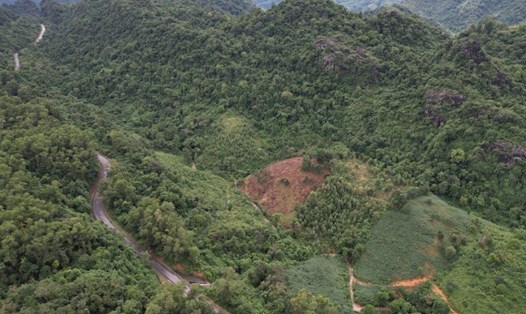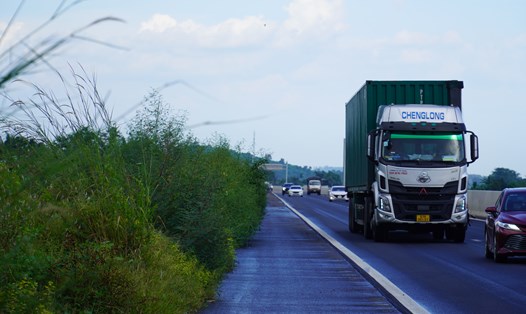Encroachment is concentrated in ethnic minority areas, so the province needs to be careful in handling the situation.
Review carefully before making a decision.
Statistics show that in the Huong Hoa-Dakrong Protective Forest Management Board, more than 2,700 hectares of forest land in Huong Hoa and Dakrong districts have been encroached upon. However, according to the leader of this unit, after checking, most of the encroached land area has been used stably by the people before.
“Because in the past, the planning was not strict, we just encircled it, issued red books, and handed it over to the management unit. But in reality, many areas have been stably cultivated by the people before” - Mr. Nguyen Cong Tuan - Director of Huong Hoa - Dakrong Protective Forest Management Board informed.
After reviewing, this unit proposed a plan to separate and hand over most of the encroached land area to local management, from which the locality would hand it over to the people based on reality. The remaining 300 hectares, which are encroached forest land areas located in the core area, surrounded by forest, must be reclaimed.
Before proposing the plan, the Management Board of Huong Hoa - Dakrong Protective Forest conducted statistics and assigned ownership of the encroached land areas, but up to now, about 20% of the land has not been assigned ownership, so it is difficult to propose a solution.
Similarly, at the Dakrong Nature Reserve Management Board, more than 2,100 hectares of forest land have been encroached upon, but much of this area is swidden land cultivated by ethnic minorities long before the reserve was granted a red book.
Faced with this situation, the People's Committee of Quang Tri province has requested the Department of Agriculture and Rural Development to work with relevant agencies, units and localities to collect opinions and complete a plan to handle the area of forest and forestry land encroached upon at 5 management boards of special-use forests and protective forests.
Calculate reasonable and appropriate treatment options
According to the People's Committee of Quang Tri province, at the Management Board of Bac Huong Hoa Nature Reserve, the Management Board of Dakrong Nature Reserve, the Management Board of Huong Hoa - Dakrong Protective Forest, the Management Board of Ben Hai River Basin Protective Forest, and the Management Board of Thach Han River Basin Protective Forest, there are more than 5,300 hectares of forest and forestry land encroached upon. In which, the encroachment is mainly on planted forests, swidden fields, agricultural production, wet rice, home gardens... of the people.
Mr. Ha Sy Dong - Acting Chairman of Quang Tri Provincial People's Committee - said that in order to have a solution, Quang Tri Provincial People's Committee has requested units to determine the subjects of cultivation and the time of cultivation. In particular, it requires forest owners to coordinate with local authorities, relevant agencies, organizations and individuals to establish inspection teams to verify the overlapping and encroached areas, including: determining the area, location, current status, subjects and time of cultivation.
After identifying the subjects, publicly post the list of encroaching subjects and overlapping areas for a limited time. After the posting period, carry out the recovery or handover to local management.
In addition, strengthen the management and protection of forests in encroached and encroached areas, do not let subjects expand the encroached area, exploit the benefits on the encroached land in order to promptly detect, fight, and investigate to identify the encroached and encroached subjects. Carry out propaganda and mobilize subjects who encroach on forest land to voluntarily take responsibility for the area they have illegally used, and at the same time commit to returning the land to the unit after handling the planted trees.
“Many areas of forest and forestry land have been encroached upon for a long time, people have been cultivating and living stably, so the province requires relevant units to come up with a reasonable and appropriate solution. The progress to implement the solution is from 2025 to 2030,” said Mr. Ha Sy Dong.










